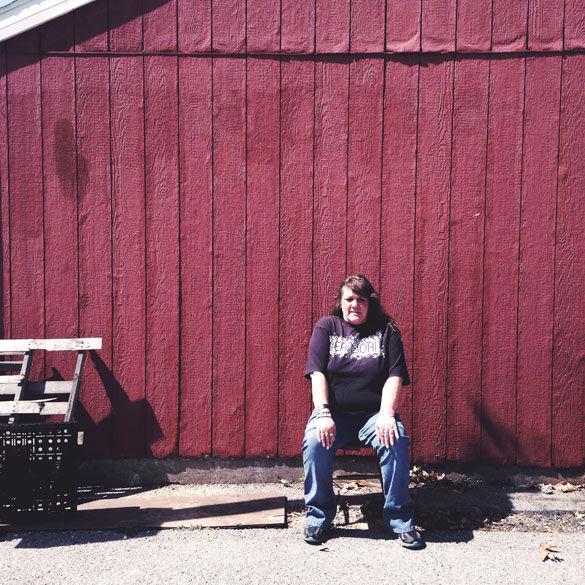Homelessness: The invisible issue
March 31, 2015
A leading national advocate for the homeless said on Sunday, “You could drop me in any city or town of any size anywhere in the country, and I could find [people] that are homeless.”
“[The problem] is way bigger than we’ve ever allowed ourselves to think,” said Diane Nilan, founder of Hear Us.
{{tncms-asset app=”editorial” id=”0455f34a-d8d6-11e4-968d-ff5b526983d6″}}
Advertisement
Hear Us is a national nonprofit organization focused on bringing awareness and visibility of homeless children to the general public.
Nilan was in Carbondale to show her film “Worn Out Welcome Mat,” a documentary depicting families and youth discussing their homelessness.
Mike Heath, the executive director of Carbondale’s Good Samaritan Ministries, a nonprofit homeless shelter, said he sees an increase in the issue.
“Every unit in the 2014 calendar year is up more than 100 percent of what we’ve done within the last five years,” he said.
The highest unit, emergency assistance, is at nearly 150 percent. Other units include the emergency shelter, soup kitchen, food pantry and transitional housing.
“Our business is booming,” he said. “That’s not a good thing. In an ideal world, we wouldn’t need to be here.”
Good Samaritan has 30 emergency shelter rooms where clients can stay up to 30 days, and 10 transitional housing rooms, where clients can stay up to two years. Additional days can be granted depending upon circumstances.
Advertisement*
Emergency shelter is temporary, intended to house the homeless until they get back on their feet. Transitional housing is rehabilitative, directed toward those with issues deeper than poverty, such as mental illness or substance abuse. To qualify for transitional housing, a client must be referenced by other agencies.
{{tncms-asset app=”editorial” id=”2c72b176-d8cf-11e4-a5ac-e3166db58833″}}
Both programs are almost always full, which puts new prospective clients on a waiting list, Heath said. Even then, acceptance into Good Samaritan is not always guaranteed.
The shelter, founded in 1985, screens potential residents for active arrest warrants as well as records of pedophilia, considering the shelter is less than 500 feet away from Head Start—a preschool program at SIU. In addition, clients cannot have disabilities that compromise their ability to move freely within the shelter or interact amicably with fellow residents.
Drug and alcohol tests are conducted before a person is allowed residency, and are administered sporadically during his or her stay. The shelter has a zero tolerance policy, and Heath said if tenants fail a test, they have to leave.
“We’ve got people to protect.” he said. “We have babies downstairs at times, geriatric people, handicapped people.”
When the demand for shelter exceeds supply of rooms, living in motels, storage units, vehicles, campgrounds or on the streets often becomes a reality for the homeless, Nilan said.
To avoid those living conditions, two or three homeless individuals or families sometimes live with family or friends, leading to overcrowding in those homes.
“All of these things are happening right here in Carbondale,” she said.
{{tncms-asset app=”editorial” id=”7201c726-d8d0-11e4-b959-77a9bf959994″}}
However, homelessness is rarely acknowledged as a social issue in need of attention. Instead, it is treated as a frustration for the city.
Cathy Talbott, a homelessness advocate and a formerly homeless woman from Herrin, said this is exemplified in Carbondale’s intolerance of panhandling. Those caught in the act are often fined, and in some cases, arrested.
These restrictions put increased strain on individuals in tough situations, said Tina Chappell, a homeless woman temporarily staying at Good Samaritan Ministries.
“Panhandling isn’t begging,” she said. “That’s survival.”
Most of the time when the homeless panhandle, it is not for drugs or alcohol, as some would believe, Chappell said. It’s a way to gather the means to stay off the street and maybe afford a motel room for the night.
“Sometimes people passing by are really hateful,” she said. “They’ll throw pennies at you and yell at you to get a job. If we could get a job, we wouldn’t be sitting on this corner.”
Chappell, of Shawneetown, has been periodically homeless for four years. Her children’s father died in a car accident in 2010, and her two kids were put into foster care in 2011. Shortly after, she lost her house and all of her belongings.
She began staying at homeless shelters around the area. When the allotted 30 days at a shelter ended, she sometimes had nowhere to go but the street. Living on the streets increases danger, she said. As a woman, she is often scared of being sexually assaulted, raped or otherwise harmed.
She was once approached by two men asking if she would be willing to participate in prostitution.
“They offered to pay me right there and whipped the money in my face,” she said. “I could never do something like that. I would rather die on the street.”
Despite the extremity of her experiences, Chappell said some people doubt the validity of her homelessness.
“I’ve had them tell me, ‘You don’t look homeless,’” she said. “I’m homeless. I have nothing. I’ve lost everything. Why would I make that up?”
{{tncms-asset app=”editorial” id=”01233142-d8d1-11e4-a50c-c3402a7a7af5″}}
Many often assume most homeless people are scruffy addicts in the street corner begging for money, when in reality, that is the minority, Nilan said.
“We like to make demons out of people so we don’t have to feel bad about them,” she said.
Abuse, poverty, domestic violence, economic issues and housing affordability also contribute to the issue.
“Homelessness pretty well reflects where the economy is on a local basis,” Heath said. “At the food pantry, it’s easy to see when unemployment is down; more people show up.”
Layoffs can be devastating, but finding a new job and starting over can be stressful as well.
Chappell has been job-hunting for four years with little luck. While hopeful, she said her chances of getting hired at 49 years old are slim compared to younger candidates.
Even when job opportunities arise, expensive housing remains an issue, Talbott said. Carbondale has plenty of living space, but people starting with a minimum wage salary most likely will not be able to afford rent in addition to taking care of personal needs.
Nilan has a suggestion to improve local economies and homelessness.
{{tncms-asset app=”editorial” id=”f84968ee-d8cf-11e4-b22a-dff5aa98fec1″}}
The money that banks received in government bailouts, and the houses owned by banks in a community should be converted into housing provided for homeless families and single adults, Nilan said. Jobs could be created by hiring the homeless to renovate the houses.
“Housing is a right,” Nilan said. “We have the resources we need within this country to do a whole lot better than we’re doing.”
It is just a matter of altering our mindset and becoming more aware of the issues happening around us, she said.
Chappell stressed that compassion is also needed.
“Homeless people are falling through the cracks,” Chappell said. “I don’t want to be judged by other people because I’m homeless. I’m not a bum, I’m not a vagrant, I’m a human being and I want to be treated as such.”
Jessica Brown can be reached at jbrown@dailyegyptian.com.
Advertisement








